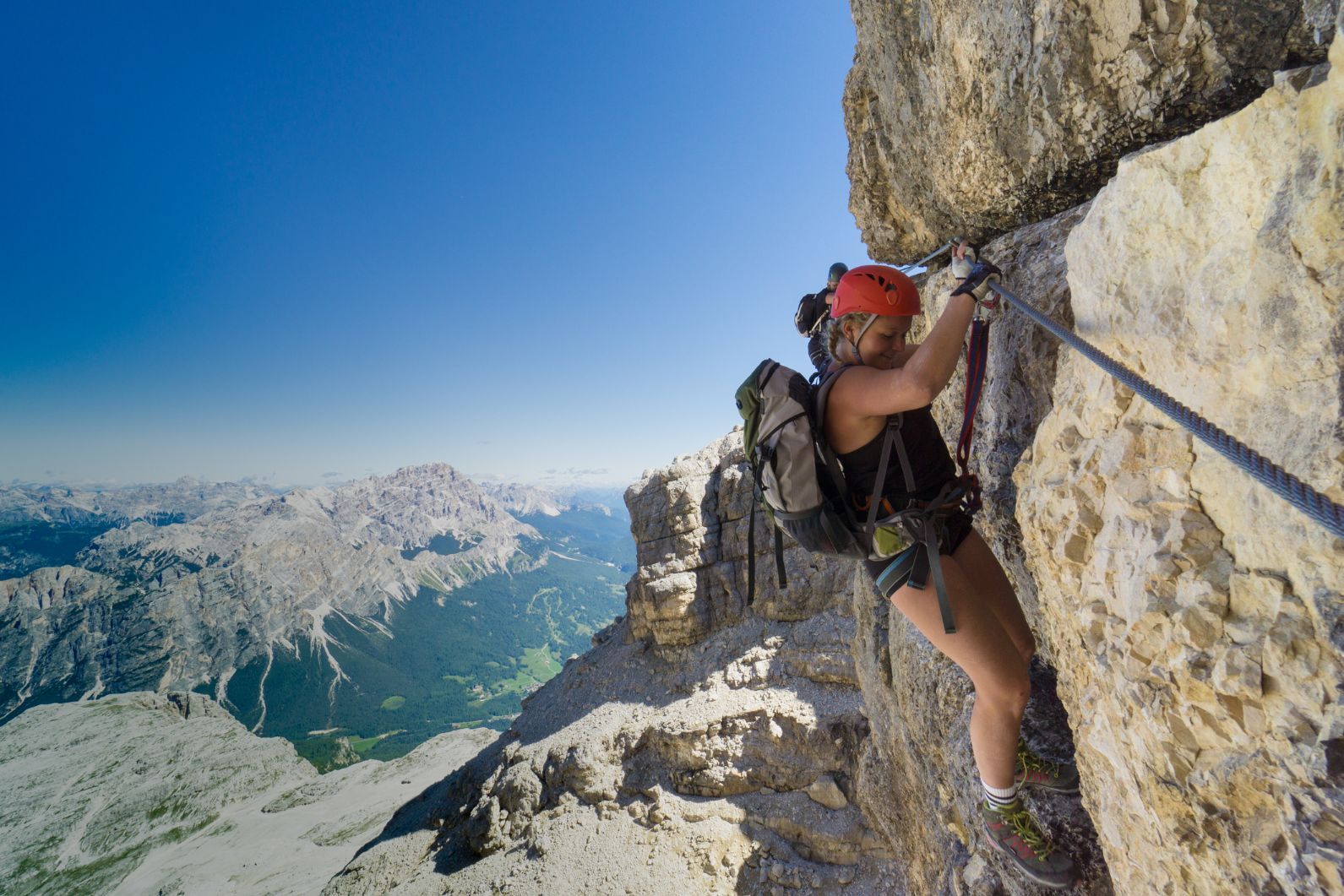Via ferrata is a mountain activity somewhere between scrambling and rock climbing. Via ferrata climbing is a protected climbing route using metal cables, iron rungs, and ladders fixed to rock surfaces. Popular in Europe, especially in Italy, France, Austria, and Slovenia, it allows climbers to ascend steep terrain with safety gear attached to the cables. It blends hiking and climbing for an accessible alpine experience. We’ll get into exactly what we mean by that in a minute, but that’s the basic idea.
What is Via Ferrata Climbing?
Via ferrata means “iron way” in Italian, hence the metal cables, iron pins and foot holds. They are very popular in Europe and are common features across the mountains of Italy, France, Slovenia and Austria (where it’s called klettersteig) – to name a few. The featured image above was taken in Alta Badia, in the Italian Dolomites, and that's where you'll find the "first ever" via ferrata route, installed on the mountain in 1880 by local mountain guides to help their clients make an ascent. These types of paths were also used in World War 1 as a way to move troops around the borders of Austria and Italy.
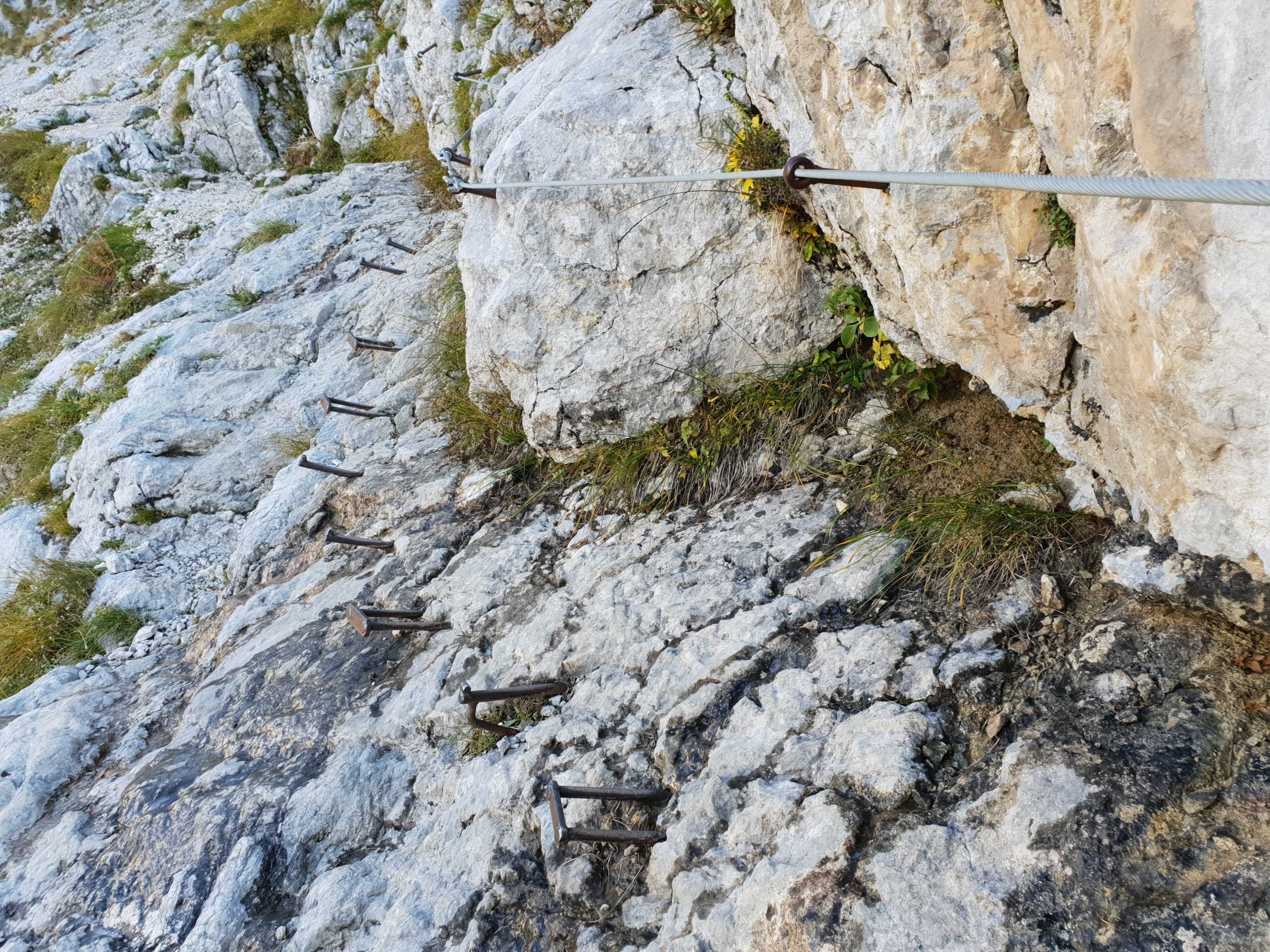
There are only a couple of via ferrata routes in the UK, but they’re growing in popularity. These tend to be privately owned and maintained, because we have a very conservative attitude to adding man-made structures to our mountains. In Europe, the via ferrata routes are either privately owned or maintained by local mountaineering clubs.
What to expect on a Via Ferrata Route
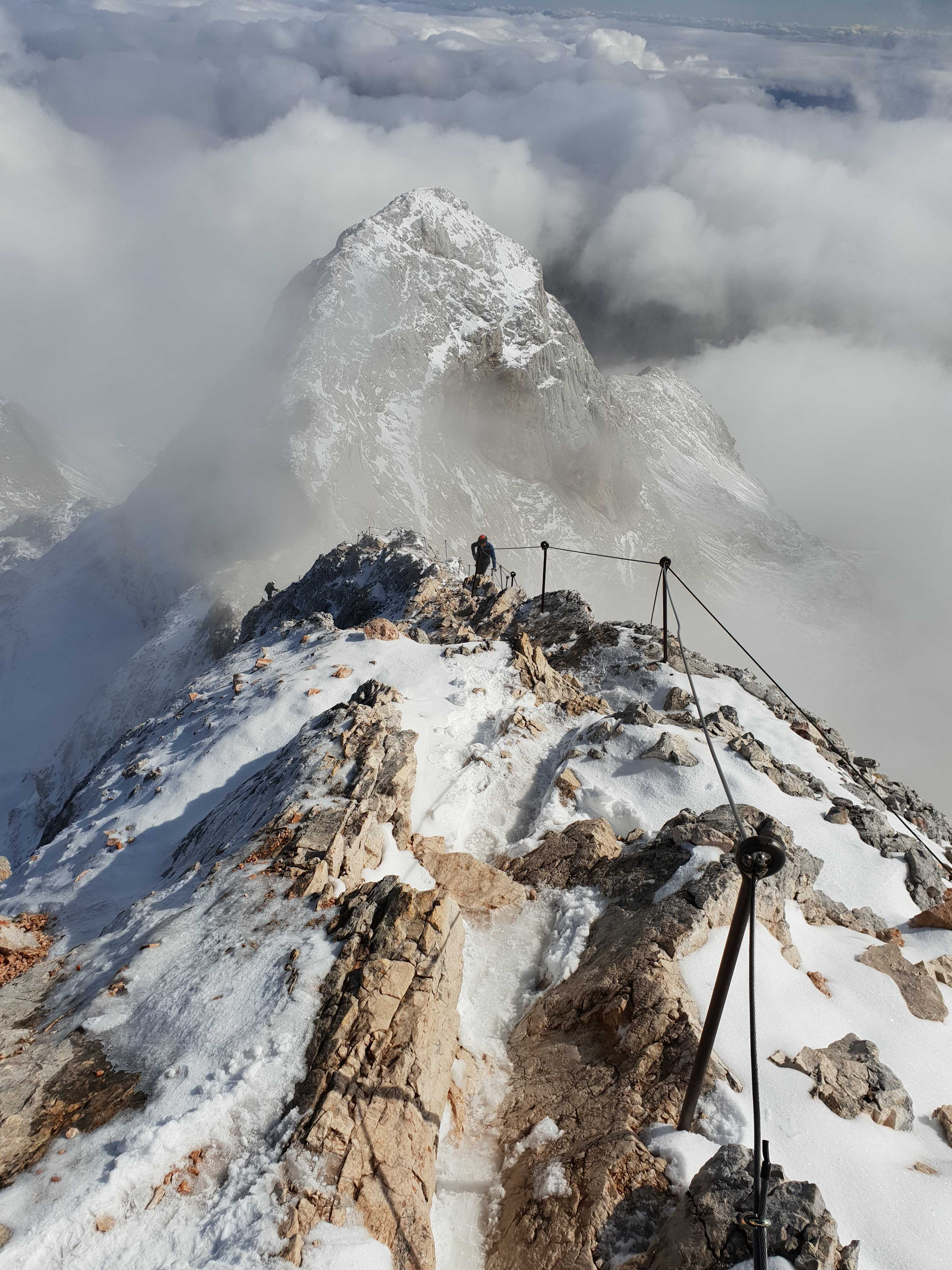
Like we said, via ferrata falls somewhere between scrambling and rock climbing on the “ways to get up a mountain” scale. They can be anything from horizontal to vertical – and all angles in between. Typically, you will be traversing a ridge, making your way around a mountain or climbing a peak. A via ferrata route has more protection than a scrambling route (in scrambling if you fall there’s nothing to catch you), but is quicker and easier than rock climbing (you don’t need to place lots of gear or use a rope).
There are two main types of via ferrata:
- Routes that are just for fun. There is another, easier route to get from the start to the finish of the via ferrata. For example, the via ferrata in Honister Slate Mine could easily be walked around if you were just trying to get up Fleetwith Pike.
- Routes that make the only way from A to B accessible. It is the only way to get there without rock climbing equipment and the via ferrata has been added to make it safer for non-climbers. For example, the summit of Triglav can only be reached this way.
In general, the first feels more like having a play in a mountain gym of wires, ladders and metal spikes. The second feels more like part of a bigger expedition and the via ferrata is almost incidental. It’s great fun, but you have to do it to get where you need to go.
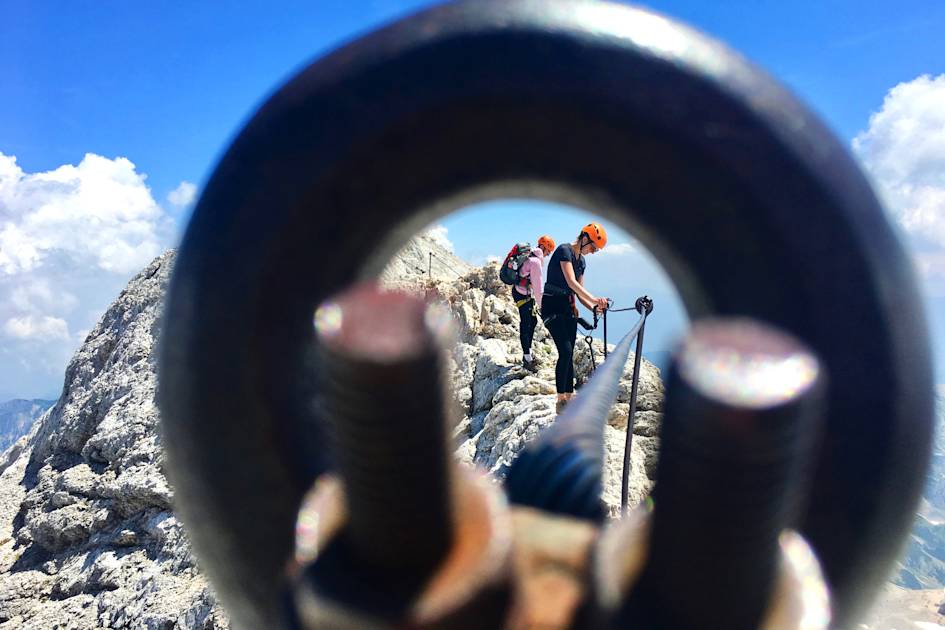
What equipment do I need?
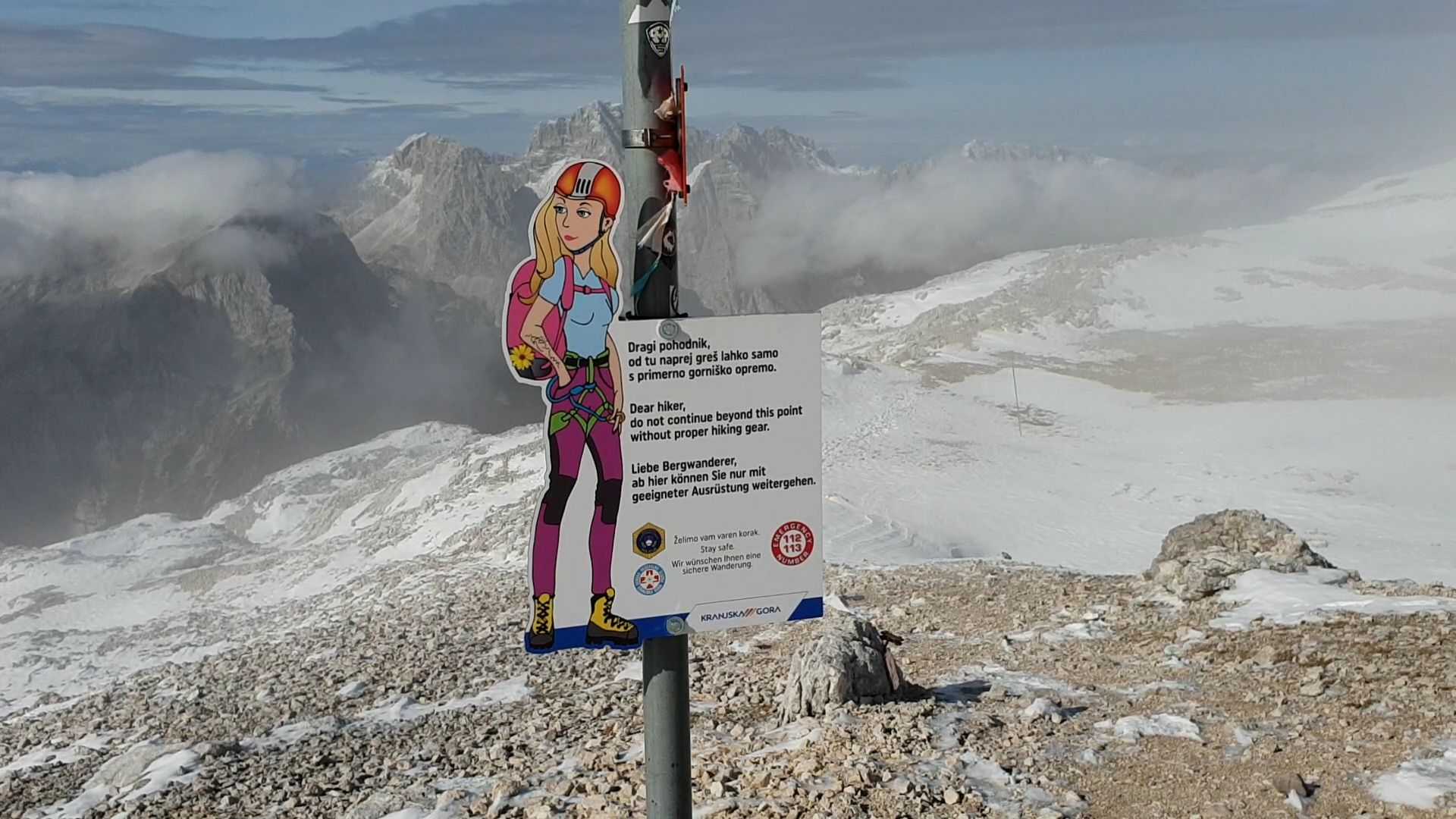
Yes, you definitely do need specialist via ferrata equipment. Most of it is common with rock climbing, but Although if you are going on a guided via ferrata trip, you can expect the extra kit to be provided. Less for you to squeeze into your luggage! There are three key items that you need to be able to do via ferrata.
Helmet
This should be a rock climbing helmet, worn to protect your head from rocks if you fall – or on occasion from rocks falling on you. It's also really handy if you're on an awkward overhang or ledge and accidentally look up too quickly. Basically, you're going to be getting up close and personal with some rock. A helmet will protect your head for the duration.
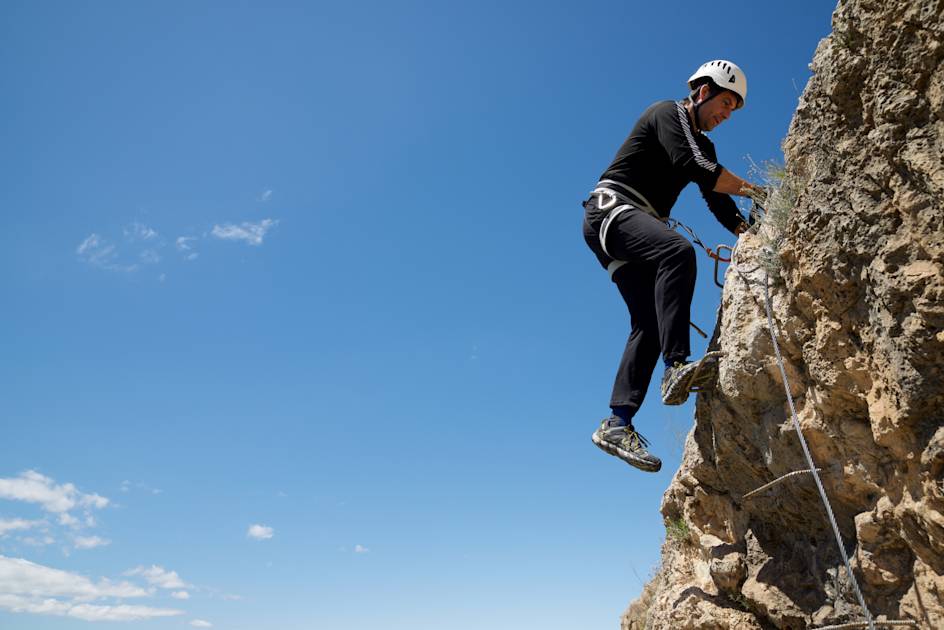
Harness
Normally, a standard rock climbing harness is used with a via ferrata set. Sit harnesses are most people's choice (bottom half with leg loops), but it's recommended to use a full body harness if you are carrying a heavy rucksack. It's all about centre of gravity and the last thing you want is to flip over as you fall. You can create a similar solution by combining a sit harness and a chest harness. The best via ferrata harness is one that fits you comfortably and will keep you safe if you fall - via ferrata routes can take many hours and you'll need to be wearing your harness throughout.
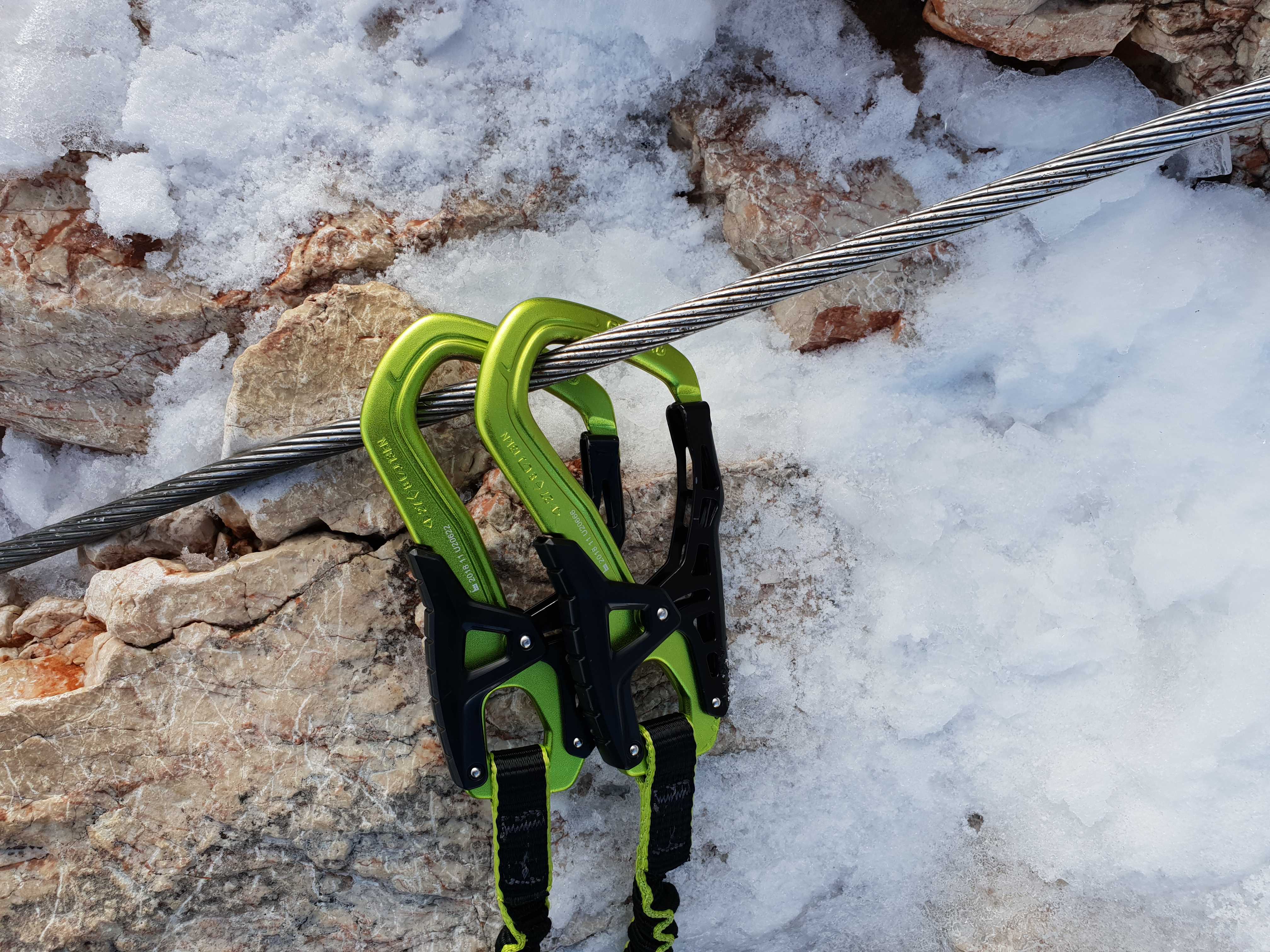
Via Ferrata Lanyard
Also known as a "via ferrata set" this is the special bit of equipment that allows you to clip into the route. The lanyard is basically two karabiners on the end of stretchy leashes, attached together in a Y shape. You clip the karabiners onto the metal wire as you go. The other end of the lanyard contains a shock absorber, just in case you fall, and is attached to your harness.
If you are on a guided trip, this will be provided. However, if you're renting separately or looking to buy your own kit there are a few things to look out for. Firstly, stay well away from old-style static rope via ferrata kits. These don't have the energy absorbing capacity of newer designs. If your lanyards are stretchy, it's a new model. Also look for karabiners that are easy to clip and unclip, ideally one-handed. This will be the key factor of how fast you can move along the via ferrata. Plus if you're of an impatient disposition, taking forever to transition between each cable gets very frustrating very quickly.
Other Equipment
Those are your main three items, alongside normal clothing you'd be wearing in the mountains. For those who want to look like pros, you might also like to bring some gloves (or fingerless gloves in summer) to protect your hands from the metal wire. It’s a pretty thick wire, so you won’t get cut or anything, but it can make your hands hurt after long sessions.
In terms of footwear, it really depends on the particular route. We'd recommend looking it up beforehand and the weather you'd normally expect. For example, a dry rock route in summer might be fine in hiking shoes. But a route in the high mountains, covered in snow and ice, would be best done in winter mountain boots. Some via ferrata are closer cousins to canyoning, climbing the sides of waterfalls or river gorges, so footwear that's grippy on wet rock is essential.
Do I need any previous experience?
The beauty of via ferrata is that you don’t need any previous experience to give it a go. What you do generally need is a good head for heights, or a willingness to try more exposed edges than a usual mountain hike. To see what we mean by this, take a look at the photo of the via ferrata route up Triglav in Slovenia. The red arrows mark people.
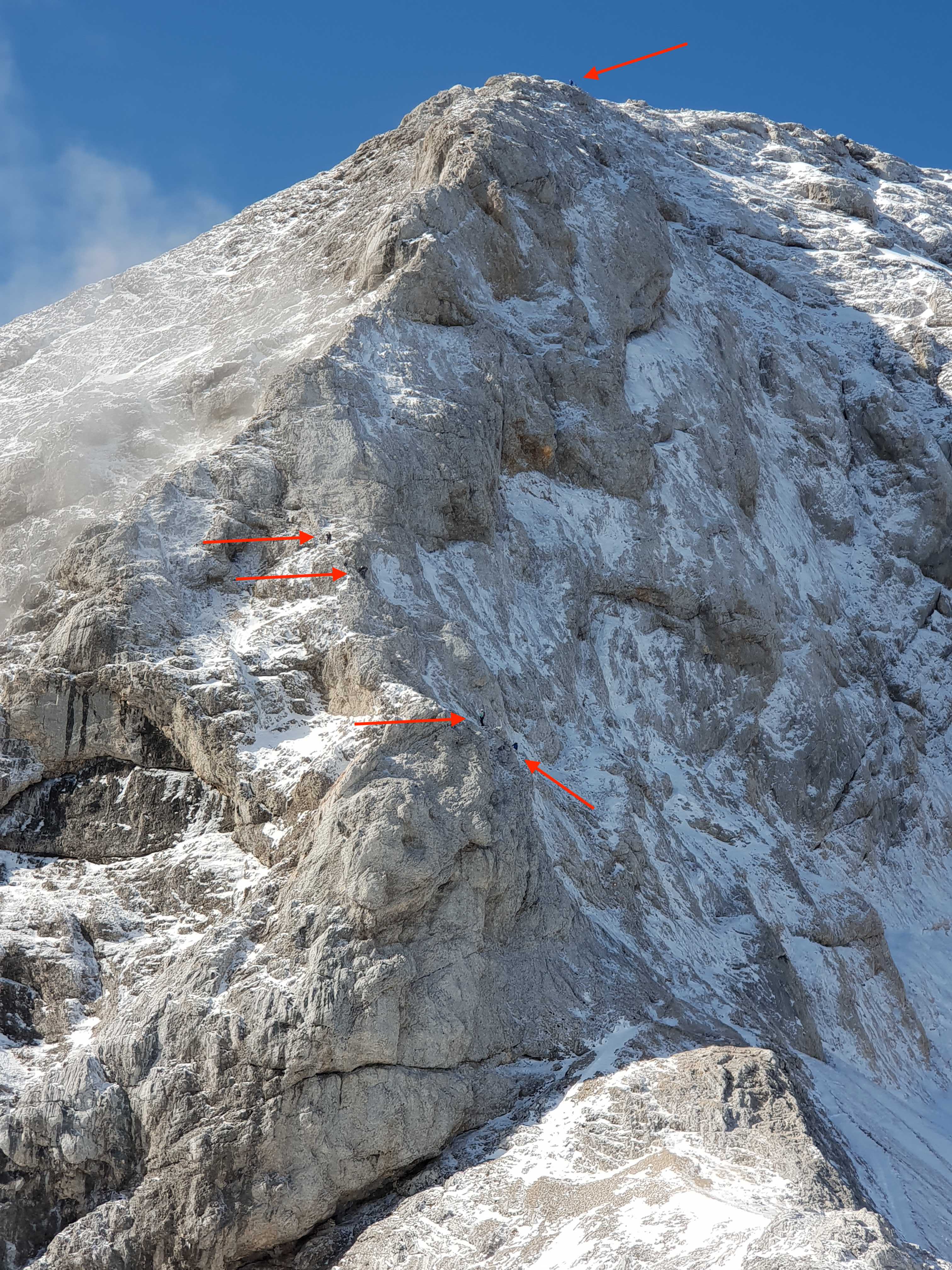
That’s the kind of scale we’re talking. If you didn’t know the people were there, you might think that route was impassible. Actually it’s very achievable with the right kit and conditions. If looking at the picture makes you feel excited – great! If it makes you feel slightly terrified, then maybe it’s worth spending some more time in the mountains as preparation. Any experience you have moving on rock or dealing with heights will certainly help. But via ferrata is not technical, so very do-able if you can keep your monkey brain bottled!
Alternatively, look for shorter routes to start with: ones that are for "sport" rather than necessary to an expedition. These often include fun extra elements like wire bridges, plus plenty of escape routes if you decide it's not for you.

Is via ferrata safe?
Nothing in the mountains is completely safe. Except perhaps sitting in a mountain hut drinking schnapps… oh wait, maybe that’s not 100% safe either! Via ferrata gives you an extra level of protection on rock faces and mountain edges that are steeper and more exposed than you’d usually want to go on as a hiker. The infrastructure is already there and you just have to turn up with your kit. You don't have to use the steel cables, but clipping into them certainly makes it safer than not using any protection. Particularly in places with lots of exposure (read: flipping big drops either side).
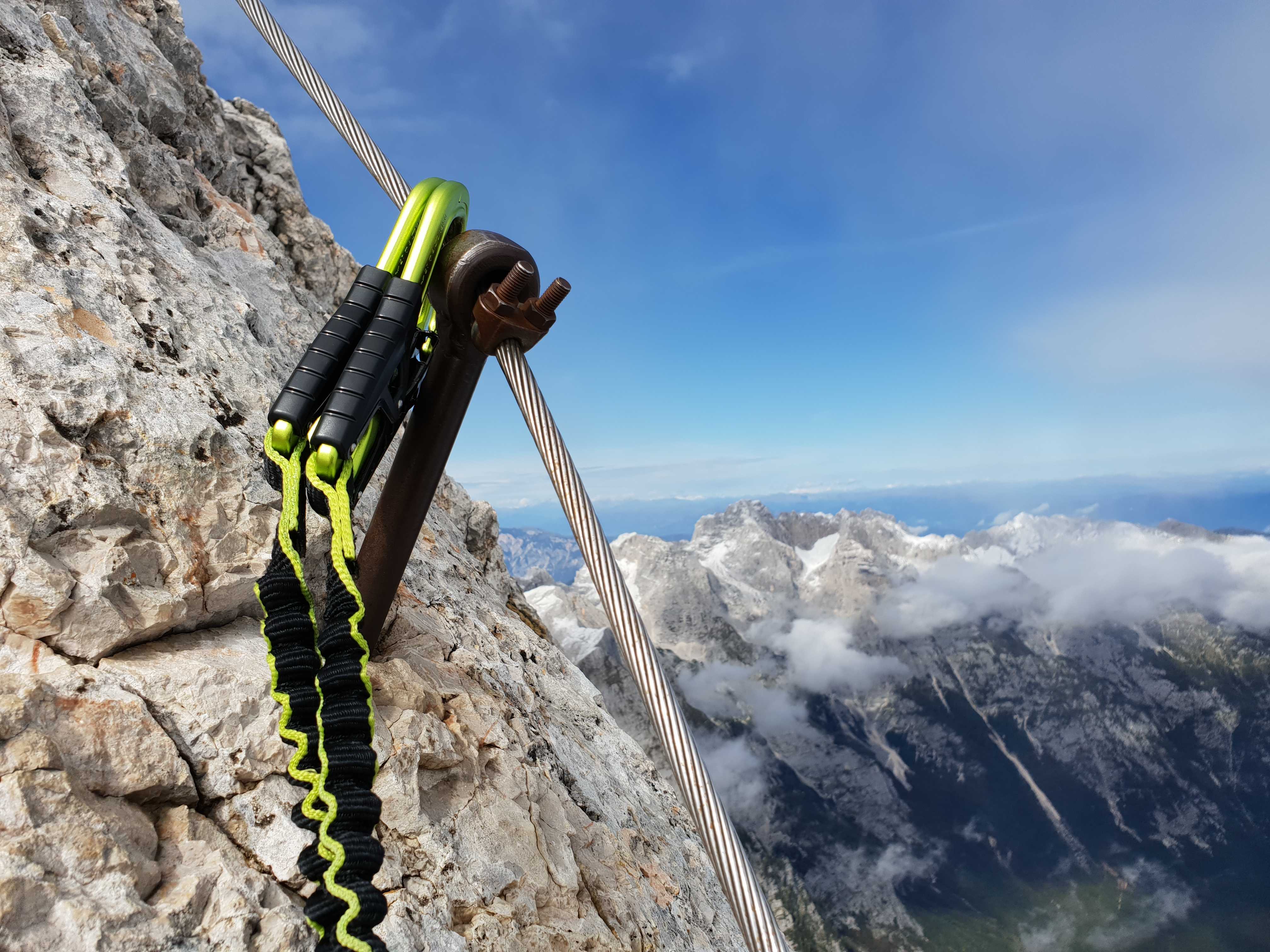
It is not, however, a complete blanket of cotton wool. Having a via ferrata route doesn't eliminate all of the risk. If for some reason you do slip and fall, your karabiners will slide back down the metal cable until the next attachment point before your shock absorber kicks in. If you’re near the top of a section, that can be quite a long way! That's why it's important to always clip into the highest cable you can reach.
On the other hand, you’re far less likely to fall any distance. You need to use your hands, but not to the vertical extent of climbing. The thrill is generally from the exposure and any very steep or technical ground is usually replaced by ladders. You get a tingle of risk and wonderful views – just don’t take too much for granted and you’ll be alright.

Is it safer than taking a rope and rock climbing gear to place your own protection? Who knows. Both have their risks. Via ferrata routes are well used and maintained by other people, for example, so that could make them seem more trustworthy - or less depending on your personality! The metal spikes can pop out if they are stuck by lightning, but you’ll definitely notice this before you try to clip into the affected wire. Well used routes are usually fixed very quickly. Equally, they are much more securely fixed into the rock than any piece of climbing gear.
By the way, a via ferrata route is the last place you want to be in a lightning storm! Always check the weather. And, as with anything, if you’re not confident consider going with a guide first to ease yourself into the via ferrata world.
Where can I do via ferrata?
The highest concentration of via ferrata routes are in the mountainous parts of Europe. Whether that's the Dolomites, the Julian Alps, the Maritime Alps or the Apuseni Mountains of Romania there are plenty of awesome via ferrata in Europe.
With so many mountains, it would be surprising if there weren't any via ferrata in the US. There are several managed via ferrata in ski resort areas, like Mammoth Mountain and Tahoe. The path to the summit of Half Dome in Yosemite is also, technically, a via ferrata. And, honestly, they're pretty much worldwide now. New Zealand has "the world's highest waterfall cable climb" in Wanaka. Mount Kinabalu in Malaysia has a via ferrata route that ends 3,776 metres above sea level.
Excited to test yourself on a via ferrata trip in the near future? Check out the ascent of Mount Triglav in Slovenia.


